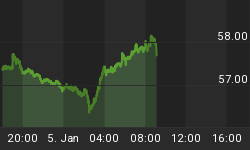From its July intraday low to its October 9, 2007 intraday high the DOW has fallen 20.5%. A lot of commentators on television and the Internet are making note of the fact that the DOW is down 20% and saying that this is "bear market territory." Some are saying that this means it is the time to buy, while others are saying this is proof that we are now in a bear market.
I don't really believe this is a good way to define a bear market. But let's take a look at some figures first before I get to that. First of all according to a story in this week's Barrons citing research by the Bespoke Group, there have been 11 bear markets since 1940. The average bear market last 386 days while the shortest, which took place in 1987, lasted only 101 days. They list the longest one being the 1973-1974 bear market, which they say lasted 630 days.
However, they divide the 2000-2002 bear market into two bear markets. I really think it was one big bear market. If you think like I do then you'll get a bear market that lasted for over 700 days.
What is interesting though is that the average bear market brought a 30.40% drop in the broad market averages. Historically once the 20% mark has been reached the best performing sector for the rest of the bear market has been gold stocks and as the bear market reaches an end the defensive sectors that usually do well in the beginning of a bear market end up dropping too.
I really don't like to use this 20% mark as a definition of a bear market, because once you get to 20% usually at least half of the bear market has already taken place - and even if it doesn't have more to go - if you wait for the market to fall 20% to decide you are in a bear market you are going to lose a lot of money getting to that 20% mark.

What I use to define whether or not a market is in a bear market is simple stage analysis. I break the market up into four stages - basing, bull market, topping, and then bear market. The market went through a topping stage in the first half of last year and began a bear market in the Fall. Gold and oil stocks never began a bear market and are still in bull markets while bonds appear to be in a topping stage.
It isn't hard to identify what stage a market is in.
The simplest way is just to look at the market in relationship to its long-term 150 and 200-day moving averages. Once the market breaks below them and stays below them for 6-8 weeks these moving almost always turn down. A bear market then begins and throughout the duration of the bear market these moving averages become resistance throughout the rest of the bear market.

We have seen this happen once again in this bear market. Back in November the S&P 500 rallied to its 200-day moving average and failed to breakout into a sustainable rally above them and turned lower. The same thing happened again this past May.
These moving averages will continue to act as key resistance points during this bear market. As you can see the market has fallen even further below them the past few weeks. Falling prices are only one component of a bear market. It will take a long time before the key market averages are able to have a sustainable rally above them and we'll have a bull market in which these moving averages will act as support. Even if the market were to bottom right now it would takes months of basing and sideways action before this can happen.
There is absolutely no reason to try to bottom guess this market. Rallies should be used to to raise cash and take short positions if you want to profit from the declines. It is best to wait until the end of the bear market before trying to buy into it. And of course there are indicators you can follow to warn you of a change in the market well before the moving averages do. None of them suggest that this bear market is over.
This article is an excerpt from a WallStreetWindow subscription article. To receive my stock picks and all future articles just click here.















